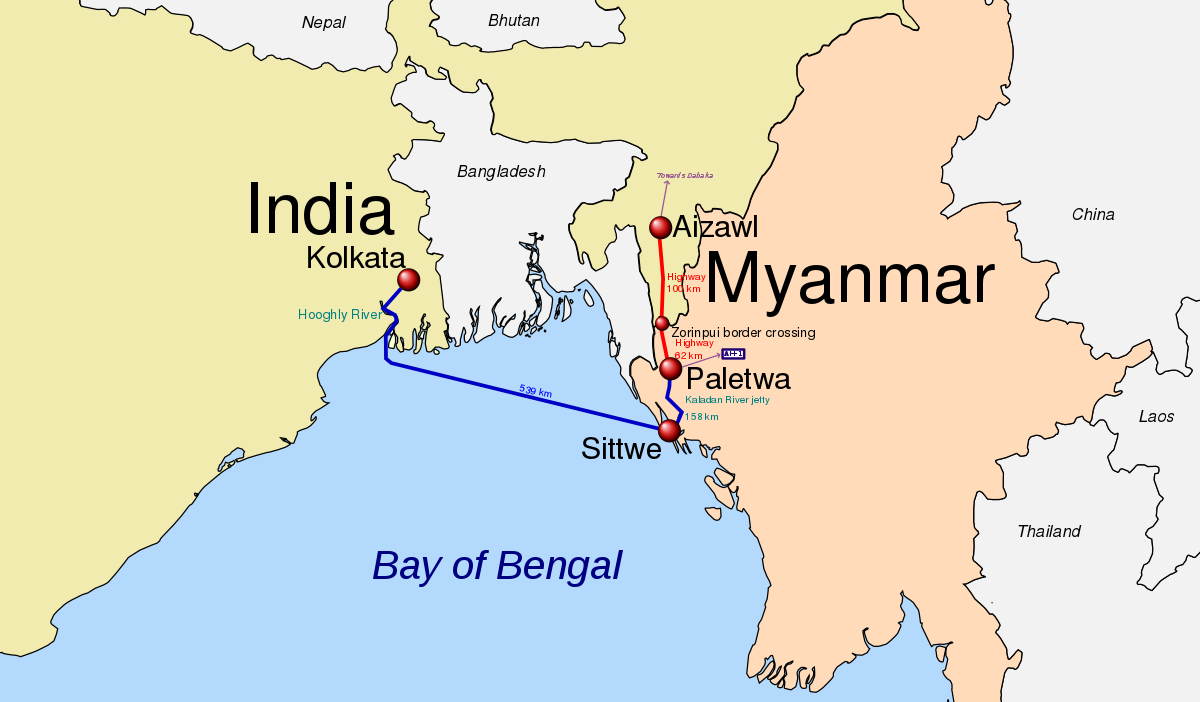IASbaba's Daily Current Affairs Analysis
Archives
(PRELIMS + MAINS FOCUS)
MoU for Education for Deaf Children signed
Part of: GS Prelims and GS-I – Social Issues & GS-II – Education
In news
- A historic MoU was recently signed between Indian Sign Language Research and Training Center (ISLRTC) and NCERT to make education materials accessible for Deaf children in their preferred format of communication.
Key takeaways
- As part of this MoU, educational print materials including NCERT Textbooks, Teachers Handbook and other Supplementary materials and resources will be converted into Indian Sign Language in Digital format.
- Class covered: Class I-XII
- Subjects: All
- Language: Both Hindi and English Medium
- Availability of NCERT textbooks in Indian Sign Language will ensure that Deaf children can also now access educational resources.
- This will also ensure educational standardization of Indian Sign Language as mandated in the New Education Policy, 2020.
Important value additions
- The Indian Sign Language Research and Training Center (ISLRTC), Delhi is a Society under the Department of Empowerment of Persons with Disabilities, the Ministry of Social Justice and Empowerment.
Flight test of supersonic missile-assisted torpedo release conducted successfully
Part of: GS Prelims and GS-III – Defence
In news
- A successful flight test of the Supersonic Missile Assisted Release of Torpedo (SMART) system was conducted from Wheeler Island, off the coast of Odisha recently.
- Conducted by: Defence Research and Development Organisation (DRDO)
- Developed by: Several laboratories of DRDO
Key takeaways
- The system will be a game changer in anti-submarine warfare.
- The development of the system has been crucial in capacity building of naval platforms to strike beyond the torpedo range.
- The system will be a significant addition to India’s anti-submarine warfare capabilities.
- SMART is a missile-assisted release of lightweight anti-submarine torpedo system for anti-submarine warfare (ASW) operations far beyond torpedo range.
Do you know?
- A modern torpedo is an underwater ranged weapon launched above or below the water surface, self-propelled towards a target, and with an explosive warhead designed to detonate either on contact with or in proximity to the large.
New Director General of Bureau Of Civil Aviation Security (BCAS) appointed
Part of: GS Prelims and GS-III – Aviation
In news
- IPS officer M.A. Ganapathy was recently appointed as the new Director General of the Bureau of Civil Aviation Security (BCAS)
- Appointed by: The Appointments Committee of the Cabinet
- BCAS is the security watchdog for the aviation sector.
Important value additions
The Bureau of Civil Aviation Security
- It was initially set up as a Cell in the Directorate General of Civil Aviation (DGCA) in 1978
- Recommendation by: Pande Committee constituted in the wake of the hijacking of the Indian Airlines flight in 1976.
- It was reorganized into an independent department in 1987.
- Ministry: Ministry of Civil Aviation
- BCAS is the regulatory authority for civil aviation security in India.
- Main responsibility: Lay down standards and measures in respect of security of Civil flights at International and domestic airports in India.
- It is headed by an officer of the rank of Director General of Police and is designated as Director General (Bureau of Civil Aviation).
- Headquarter: New Delhi.
India and Myanmar to work towards the operationalization of the Sittwe Port
Part of: GS Prelims and GS-II – International Relations
In news
- India and Myanmar have agreed to work towards the operationalization of the Sittwe port in the Rakhine state in the first quarter of 2021.
Key takeaways
- It was announced after the conclusion of the two-day visit of Indian Army Chief and Indian Foreign Secretary to Myanmar.
- The progress in the ongoing Indian-assisted infrastructure projects was also discussed.
- India also announced a grant of $2 million Dollars for the construction of the border haat bridge at Byanyu/Sarsichauk in Chin State.
- The haat will provide increased economic connectivity between Mizoram and Myanmar.
Important value additions
Sittwe port
- It is situated at the mouth of the Kaladan River.
- It is being financed by India as a part of the Kaladan Multi-Modal Transit Transport Project.
- The Project is collaboration between India and Myanmar.
- Aim of the project: To develop transport infrastructure in southwestern Myanmar and north-eastern India.

Nobel Prize For Medicine Or Physiology 2020 announced
Part of: GS Prelims and GS-III – Science and technology; Biotechnology
In news
- Americans Harvey J Alter and Charles M Rice, and British scientist Michael Houghton were chosen for the Nobel Prize for Medicine or Physiology for the discovery of the Hepatitis C virus.
Important value additions
Hepatitis C virus (HCV)
- It is a small (55–65 nm in size), enveloped, positive-sense single-stranded RNA virus
- Family: Flaviviridae.
- It is the cause of hepatitis C and some cancers such as liver cancer (hepatocellular carcinoma, abbreviated HCC) and lymphomas in humans.
- Unlike hepatitis A and B, there is currently no vaccine to prevent hepatitis C infection
- The World Health Organisation estimates there are over 70 million cases of hepatitis worldwide and 400,000 deaths each year. The disease is chronic and a major cause of liver inflammation and cancer.

Nobel Prize In Physics 2020 announced
Part of: GS Prelims and GS-III – Science and technology; Space
In news
- Nobel Prize in Physics 2020 has been awarded, with one half to Roger Penrose and the other half jointly to Reinhard Genzel and Andrea Ghez for their discoveries about Black hole.
Key takeaways
- Roger Penrose used ingenious mathematical methods in his proof that black holes are a direct consequence of Albert Einstein’s general theory of relativity.
- Reinhard Genzel and Andrea Ghez each lead a group of astronomers that, since the early 1990s, has focused on a region called Sagittarius A* at the centre of our galaxy.
- Their pioneering work has given the humankind the most convincing evidence yet of a supermassive black hole at the centre of the Milky Way.
Important value additions
Black Hole
- It is a region of spacetime where gravity is so strong that nothing — no particles or even electromagnetic radiation such as light — can escape from it.
- The theory of general relativity predicts that a sufficiently compact mass can deform spacetime to form a black hole.

(MAINS FOCUS)
INTERNATIONAL / SECURITY
Topic: General Studies 2:
- Effect of policies and politics of developed and developing countries on India’s interests
- India and its neighborhood- relations
Where India stands on peace in Afghanistan
Context: External affairs minister participating in the September 12 inaugural of the Doha inter-Afghan negotiations
India’s involvement in Afghanistan
India’s has put in considerable effort to rebuild Afghanistan after it was ravaged by Cold War turbulence and Taliban rule.
- Built Physical Infrastructure: India has constructed the Afghan parliament, a dam on the Hari Rud River, transmission lines and a power station to bring electricity to Kabul.
- Supported Social Sector: India has undertaken several small Development Projects for education and health, which has led to improvements in Social indicators of Afghan people at least in certain key pockets of country.
- Strengthening of Institutions: India has contributed to building institutions, developing human resources, training Afghan public officials and providing the country with a new generation of educated and skilled workers
What has been insinuation levelled against India and is it true?
- Many in Pakistan insinuate that India is sabotaging the Doha negotiations because India would not like Afghanistan and Pakistan to have good relations.
- Unlike Pakistan, which fears harmonious ties between India and Afghanistan, India would be quite content with friendship between Pakistan and Afghanistan
- This is because India understands that after all, the same families, clans and tribes straddle the two sides of their long and porous frontiers.
What does India’s participation in Inter-Afghan talks suggest?
- The invite to India was an acknowledgement that India has vital interests in Afghanistan.
- With participation, India has ended the erstwhile ambiguity in its policy.
- Participation does not suggest that India has now warmed to the Taliban but it underline that India has no reservations in interacting with the Taliban if the Afghan government has none
- India is now willing to engage with any party committed to peace and stability in Afghanistan.
What is India’s stand with respect to Afghanistan now?
- Supports Inclusive Peace Process: India has supported efforts to bring inclusive peace to Afghanistan by advising leaders of different ethnicities to work in cohesion with others for peace and nation-building.
- Favours reintegration of opponents: India favours the social and political reintegration of those who give up their physical and ideological association with terrorist groups and instead embrace pluralism and democracy.
- Continues opposition to Al-Qaeda: India opposes the political accommodation of individuals, groups or Islamist entities associated with the al-Qaeda, the Daesh, and their associates since this will subvert the nascent Afghan democracy, undermine human rights, and destroy emerging Afghan institutions.
- US-Taliban Peace Deal: India does not have reasons to worry about the peace deal concluded between US and the Taliban if all Afghans agree that the peace deal safeguards their interests and if they can preserve the gains made in Afghanistan since 2001.
Way Ahead
- Involve Iran: While Iran’s foreign minister did not participate because of the presence of the US Secretary of State, a way must be found to involve Iran in the Afghan peace process, which will receive a blow should there be a flare-up between Iran and the US.
- Peace needed for Region’s Stability: A subverted Afghanistan in the hands of terrorist networks will be a catastrophe for India, the region and the world. For peace in Afghanistan, there should be an immediate ceasefire.
- Sustained Action to ensure Peace: A ceasefire must be followed by the cessation of sanctuary, sustenance and support to the Haqqani Network, the military arm of the Taliban most closely linked to the Pakistan army, and other like-minded terrorist groups.
Connecting the dots:
ECONOMY/ GOVERNANCE/ RIGHTS
Topic: General Studies 2,3:
- Fundamental Rights
- Government policies and interventions for development in various sectors and issues arising out of their design and implementation
Decoding the labour Codes
Context: Government coming up with new version of three labour codes
Three guiding principles that has primarily driven Labour Policymaking journey—
- Creation of formal jobs needs formal employers
- We do not have a jobs problem but a wage problem
- We need labour laws, but fewer laws, which are pro-labour and pro-employer.
Do You Know?
- Before the four labour Codes got the final nod, India had 463 Acts, 32,542 compliances and 3,048 filings.
- Post the Parliament assent, 463 Acts have been reduced to 434 Acts, as 29 of the 44 Central Labour Laws have been subsumed in the four Codes.
The broad benefits of the four Codes for employers and candidates/employees.
Employers can find relief in the following:
- Eases Procedures: The Codes are for simplification, and rationalisation. Provision of one licence/one registration and one return will save time, resources and efforts of the establishment.
- Reduction in cost of compliance: Web-based electronic labour inspectors/facilitators shall, before initiation of prosecution proceedings, give an opportunity to the employer to comply with the provisions of the Codes.
- Legitimisation of fixed-term employment enables transparency: Clear role definitions in contract labour, clear criteria of eligibility of contractors, national licensing of contractors help create a win-win tripartite employment relationship.
- Benefits for incumbent job seekers: Some of the overarching benefits include the attempt to encompass a large cross-section of workforce, beyond those in the organised sector, and provide them with protection under the labour laws through outreach schemes, specifically for the informal and unorganised sectors.
- Benefits for Gig workers: Acknowledgement of gig work and gig platforms and the provisions to safeguard those who pick up gig assignments shall encourage many workers and aspirants to consider it as an alternate option for livelihood given the uncertainty around us.
- Safeguards Contractual Job: The change in the provision of contract labour where contract labourers need to be paid on a par with anyone doing the same job in a regular role makes it a win-win proposition for anyone opting for a contractual job.
- Boosts Investor Sentiment: All these simplification of rules facilitates improvement in the ease of doing business, which further helps in attracting foreign investment
Way Ahead
We have to shift our focus now towards
- State-specific labour reforms
- Fine-tuning further the existing codes which give us the impression of on-paper subsumption of existing acts with little change from the past
- Rulemaking, which is the actual litmus test of rationalisation of the codes
- Complete digitisation of compliances
- Democratising employment and labour data
(TEST YOUR KNOWLEDGE)
Model questions: (You can now post your answers in comment section)
Note:
- Correct answers of today’s questions will be provided in next day’s DNA section. Kindly refer to it and update your answers.
- Comments Up-voted by IASbaba are also the “correct answers”.
Q.1 Sittwe Port is situated in which of the following country?
- India
- Bangladesh
- Myanmar
- South Korea
Q.2 Nobel Prize for Medicine 2020 was awarded for the discovery of which of the following?
- Hepatitis C virus
- Hepatitis B virus
- Hepatitis A virus
- Polio virus
ANSWERS FOR 6th October 2020 TEST YOUR KNOWLEDGE (TYK)
| 1 | A |
| 2 | D |
| 3 | A |
| 4 | A |
Must Read
About disintegration of India’s Criminal System:
About approaching misinformation storm:
About Nobel prize for medicine:














